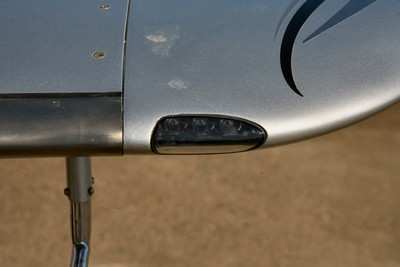Castable Thermal Epoxy
Second item. I've not worked with the thermal epoxy (Arctic Alumina?) used to mount stars on a heat sink. Here's the question (hello Sparky!); do you think you could cast this epoxy?
Dan, I, quite frankly, don't know if Artctic Alumina is "castable" or not

. All documentation directs you to use as thin an application as possible to increase the thermal conductivity properties....interesting concept, however.
Also, since I've seen Mike Behnke's model and taking into consideration other comments on this thread by "The Other Doug Reeves" and others, I am rethinking my planned installation. My installation of the GREEN Luxeon I's for the starboard side meet the FAR requirements with only three LEDs mounted only on the forward-facing surface of the wingtip cutout. Adding the three planned additional LEDs on the inboard surface may actually cause non-compliance due to the maximum allowable levels beyond 110 degrees

. Conversely, the three RED Luxeons I's mounted on the forward facing surface alone do not meet the minumum levels, but, adding three more on the inboard surface, again, may meet minimums but exceed maximums

. So I am reconsidering my design

. I may just go with only the three Luxeon I's currently installed on the forward-facing starboard side and not add the three I had planned on the inboard surface. For the port side I am now thinking of going with just three red Luxeon III LEDs driven at 700 mA mounted on the forward-facing surface. This should provide a good overall distribution meeting all FAR requirements without compromizing asthetics. I haven't yet calculated if additional heatsinking would be required.
I have not even considered using high brightness LEDs to replace the white nav/strobe lights on the tail because I already have a Whelen tail/strobe combo light and doubt that I could come up with anything elegant to replace it in the same footprint.
This has turned out to be a very intriguing thread. Thanks go out to Mike Behnke for providing a very useful tool

!









